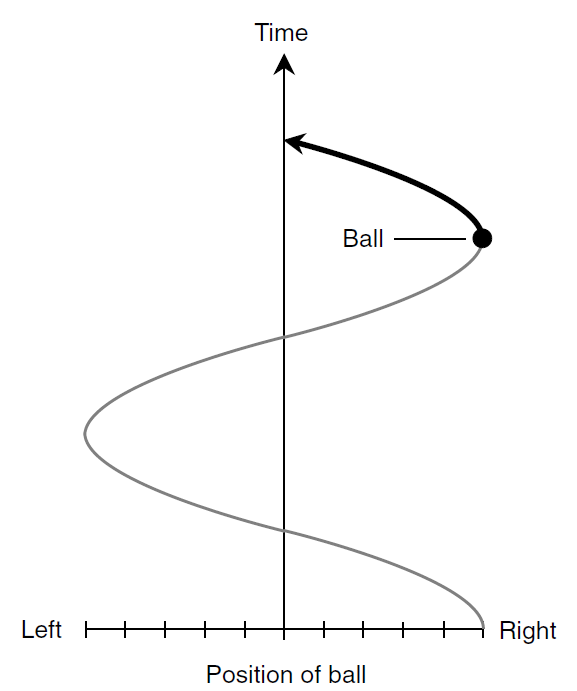
SINE WAVES AS CIRCULAR MOTION
 المؤلف:
S. Gibilisco
المؤلف:
S. Gibilisco
 المصدر:
Physics Demystified
المصدر:
Physics Demystified
 الجزء والصفحة:
329
الجزء والصفحة:
329
 5-10-2020
5-10-2020
 2320
2320
SINE WAVES AS CIRCULAR MOTION
Suppose that you swing a glowing ball around and around at the end of a string at a rate of one revolution per second. The ball thus describes a circle in space (Fig. 1a). Imagine that you swing the ball around so that it is always at the same level; it takes a path that lies in a horizontal plane. Imagine that you do this in a pitch-dark gymnasium. If a friend stands some distance away with his or her eyes in the plane of the ball’s path, what does your friend see? Only the glowing ball, oscillating back and forth. The ball seems to move toward the right, slow down, and then reverse its direction,

Fig. 1. Swinging ball and string. (a) as seen from above; (b) as seen from some distance away in the plane of the ball’s circular path.
going back toward the left (see Fig. 1b). Then it moves faster and faster and then slower again, reaching its left-most point, at which it turns around again. This goes on and on, with a frequency of 1 Hz, or a complete cycle per second, because you are swinging the ball around at one revolution per second.
If you graph the position of the ball as seen by your friend with respect to time, the result will be a sine wave (Fig. 2). This wave has the same characteristic shape as all sine waves. The standard, or basic, sine wave is described by the mathematical function y=sin x in the (x, y) coordinate plane. The general form is y = a sin bx, where a and b are real-number constants.

Fig. 2. Position of ball as seen edge-on as a function of time.
 الاكثر قراءة في الميكانيك
الاكثر قراءة في الميكانيك
 اخر الاخبار
اخر الاخبار
اخبار العتبة العباسية المقدسة


